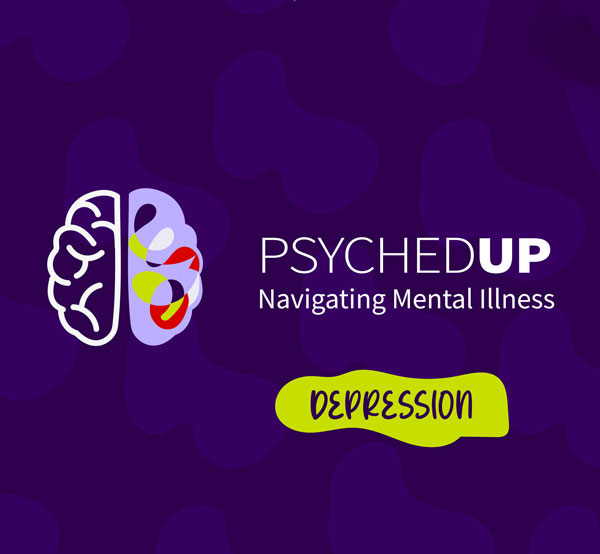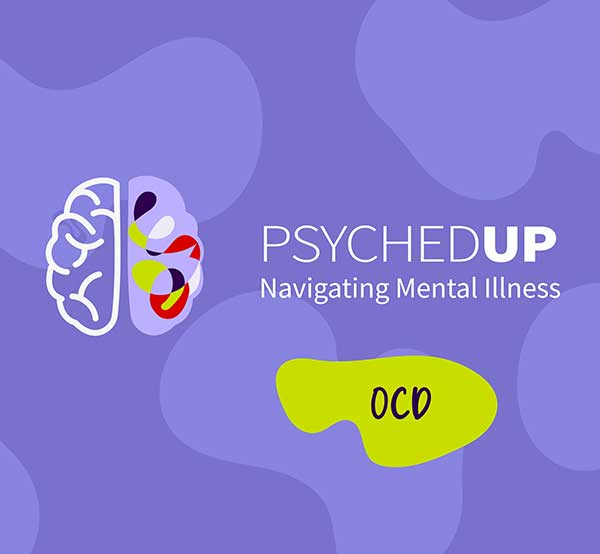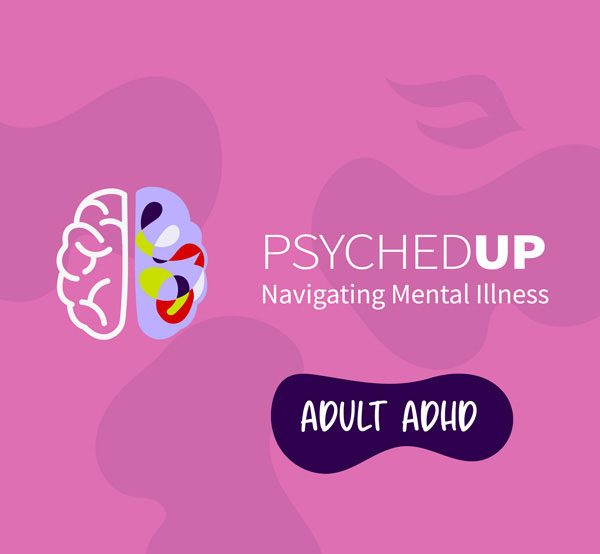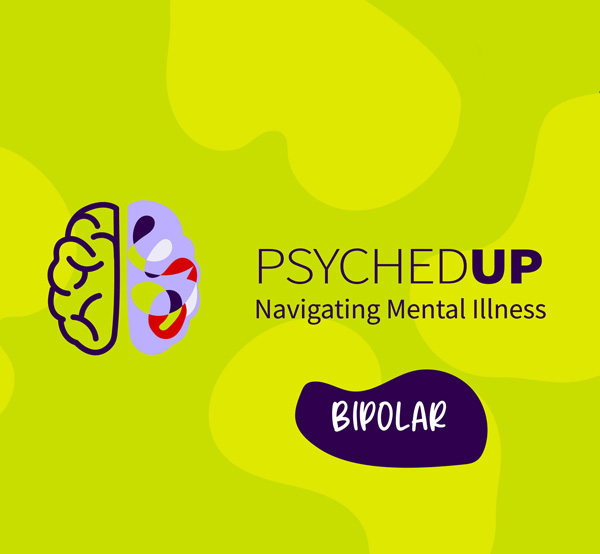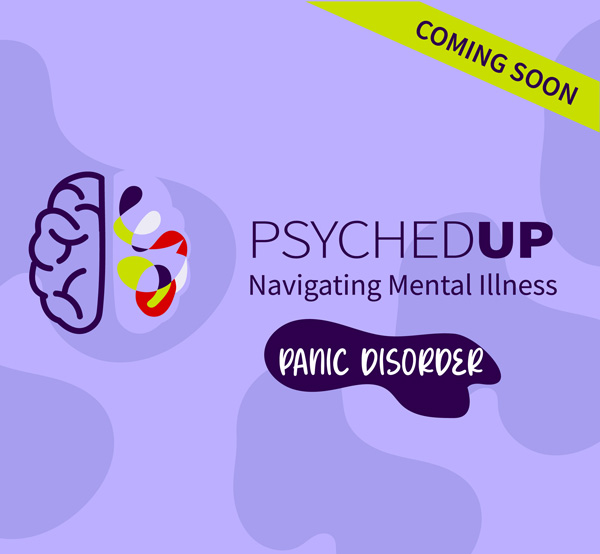
S2 Episode 1: This is Resilience
In this episode, Dr. Diane McIntosh explores the science of resilience: what it really means, how it protects against depression and anxiety, and most importantly how you can build it.
Broadcaster and author Gill Deacon shares her powerful personal story, showing how resilience can help us navigate even the toughest challenges.
Then, psychologist Dr. Randy Mackoff provides practical strategies anyone can use to strengthen resilience and face life’s challenges with courage.
Listen to This is Resilience on your favourite platform:
This is Resilience Podcast Transcript:
DIANE: We can all think of a time when things got to be just too much. Our guest has without a doubt has been there.
GILL: It’s so hard to get through the day when you’re feeling that lackluster and completely out of gas. It’s so depressing to be that way, and then it’s hard to get through. It. It’s hard to not grow. Very fearful that the person you thought you were is gone. And who will I be if I have to stay like this?
DIANE: Adversity is part of life. It’s something we all face from time to time, but some people seem to cruise through their difficult times, barely breaking a sweat while others, they really struggle to keep their head above water.
What we’re talking about here is not simply white knuckling your way through, but navigating your most trying times, and in the process gaining new strengths and skills. We’re talking about resilience.
Normally on this show, we focus on one mental illness. But given the state of the world today, we’re gonna try something a little different. We’re going to talk about something we all need in order to get through life’s inevitable challenges. At the heart of it, resilience isn’t just surviving the most difficult life experiences. It’s emerging from them even stronger. And if you’re someone who doesn’t think you have enough resilience. Please don’t worry. You can build it and we’re gonna talk about how I’m Dr. Diane McIntosh. Welcome to PSYCHEDUP. I don’t know about you, but I have found the last five years or so to be incredibly chaotic.
We’ve all been impacted by something I’ve come to call the global mental health trifecta, which started with the pandemic and really hasn’t settled down much during the pandemic, the trifecta, or the big three factors that so profoundly affected our mental health, included the inevitable health anxiety, as well as the worldwide economic uncertainty and the terrible harms associated with social isolation.
While the pandemic is over, those issues have been maintained or replaced by some other concerns. We’ve got global issues like climate change and war and fears associated with the rapid advancement of AI and other technologies. That’s a lot to deal with no matter who you are. We know this because we’ve seen the data.
Research shows that global rates of anxiety and depression skyrocketed during the pandemic, and they’ve remained high, and every age group is affected, but most especially young people, aside from being incredibly unpleasant, facing certain kinds of stress. Specifically chronic and unpredictable stress is actually really bad for your brain.
It’s been associated with depression, with anxiety, dementia, as well as with serious physical health conditions. So while we can’t control all the crazy things that life throws at us, we can control how we deal with them. If we have built our resilience, just like death and taxes, there’s no getting around it.
We’re all gonna face tough times. We’ll all have to confront adversity. But the thing about resilience is once you have it, you won’t just survive adversity. You’ll be able to emerge from it even stronger. I know, I know it’s easier said than done, but don’t take my word for it. Let’s bring in someone who’s had to dig deep more than a few times, Gill Deacon.
GILL: Friends like to say, oh. It takes me a week to accomplish what you get done in an afternoon. Like I’m a high energy, busy person. I’m very active. I ride my bike everywhere. I love to dance when a good song comes on. I sing in a band where I stay up late and dance and sing all night.
DIANE: Gill’s a broadcaster, author, and podcaster.
GILL: I was a live radio host. I hosted three hours every weekday of live radio, rock and roll, responding to breaking news, I mean, nimble, quick. I had to be sharp in my mind and full of beans in my energy and talking with people, different guests coming in every, you know, half hour.
DIANE: Gill could respond to whatever was thrown at her. It was her job and she loved it, but quick thinking and high energy doesn’t solve every problem.
GILL: I was diagnosed with breast cancer when I was 42 for the first time.
DIANE: I think you can hear some foreshadowing here, but let’s start at the beginning with her first diagnosis. Gill had to learn how to react to adversity, not by moving faster, but by slowing down.
GILL: It was springtime and I could sit in my bedroom and look out the window and notice the blossoms on the crab apple tree, and I just, I sort of looked at them more clearly than I ever had before and really noticed them and decided to kind of, not study them, but just be aware of how beautiful the world was at that moment outside my window and the sounds of children playing and all the things.
And I was aware of how, okay, well that is all, that is true, that I know this beautiful springtime weather, these beautiful flowers and, and blossoms erupting outside my window. This is a beautiful day and that’s, that is true. It is also true that I have cancer. It is also true that I have three young children who are fearful about.
What their mother’s future looks like. It is also true that doctors are doing their best to sort of deal with this. It is also true that we don’t really know what’s, how this is going to work out. So all those things are true. And which one do I wanna pay the most attention to right now? And at the very least, I wanna include the beautiful day and the springtime moment.
DIANE: Her cancer treatments lasted almost a year, and it wasn’t easy, but this tactic helped. Taking the time to let the good in as well as the bad, and it helped again when she was diagnosed nine years later.
GILL: I reminded myself, I’ve done this before, I got through this before. I was terrified before my children were terrified before. And look what we. How it ended up. So let’s just remember that while we’re inputting all the other terrifying aspects of a cancer diagnosis and treatment.
DIANE: She beat cancer for a second time, but what she didn’t know was more health problems were coming and she’d find no comfort in familiarity. This would be an entirely new challenge.
So before we continue with Gill’s story, I just wanna take a minute to check in. I started this podcast to try to change the way mental illnesses were viewed and how they were treated. Psyched up is meant to be a tool to help you or anyone who is struggling. So to help others to find the show, please follow us and write a review wherever you’re listening.
We’ve got links in the show notes if you’re looking for help, because it isn’t always easy to find. But help is out there. There’s always hope. There’s always a path ahead.
Which brings us back to Gill. She beat cancer twice. She was back at work. Her life was full busy. Then COVID hit.
GILL: We all have a memory of where we were when the penny started to drop my lordy, what is happening, and the wait what lockdowns and shelter in place. And Tom Hanks, holy cow, this stuff is real.
And I remember feeling all the panic that everybody felt. And I remember I was standing in my kitchen and I suddenly remembered, wait a second. I know how to do this.
DIANE: Gill did what always worked for her. She accepted what was happening, but made sure to allow the good moments in. It worked for a while. In 2022, she started feeling unwell.
GILL: It started with what a cardiologist told me were atrial, ectopic beats. I was asleep and I’d get woken up by this racing heart. I had a sinus pain in my head that. Was very severe and I kept thinking, is this a cold? And it never went away and it never got worse. I had shortness of breath. I would if I forgot my, you know, reading glasses on a different floor of the house.
So help me. I just was like, okay, this is gonna take me a long time to get up the stairs to go and get them. I was on the couch. Often doubled over in some form of discomfort, turning my phone on do not disturb constantly because I didn’t even, like, I didn’t wanna have to deal with a text coming in from someone kindly, a dear friend, asking How am I responding?
Just felt like too much.
DIANE: Gill stopped working. She stopped singing with her band. She no longer enjoyed family dinners. She lived like this for eight months. With no idea what was wrong and really no idea how long it would last.
GILL: It’s so hard to get through the day when you’re feeling that lackluster and completely out of gas. It’s so depressing to be that way, and then it’s hard to get through it. It’s hard to not grow. Very fearful that the person you thought you were is gone and w. Who will I be if I have to stay like this? It’s incredibly lonely. It’s incredibly frightening to think that everything you thought and quite frankly, took for granted about yourself is gone.
DIANE: After all the testing and waiting, Gill was diagnosed with long COVID. But unfortunately having a diagnosis, it didn’t bring relief.
GILL: The interesting thing about long COVID compared to cancer is the cancer is a very well traveled highway. There’s a whole lot of doctors that know a whole lot about cancer, so you can go through that excruciatingly difficult thing.
With the great measure of confidence and comfort that the teams that exist in this medical system, we are so fortunate to be part of, can take care of you. You’re always wondering how it’s gonna end and there’s always fear of, you know what if it doesn’t work out, but there’s a really good system in place.
Long COVID is like the wild west.
And I just, I thought. This is never gonna end. And I had really dark thoughts. Sometimes I, yeah, I wondered, I really, I really doubted whether I, I did, whether this would ever end.
DIANE: Gill was in need of relief. She needed answers. She needed to find her inner strength, her resilience.
So when times are dark, how do you find your resilience, even when you feel like you don’t have any? Well, I have some ideas and my next guest does too.
So as always, I’m here with my friend and colleague, Dr. Randy Mackoff, who is a PhD psychologist and an expert in talk therapy. Just to remind you, as a psychiatrist, I tend to focus on prescribing medications for mental illness, although a lot of my colleagues also do talk therapy. Randy, it’s great to have you back in the therapist chair, and I wanna talk to you about something a little different from our usual content.
Today we’re gonna talk about resilience, and as you know, resilience isn’t just about surviving adversity, it’s the ability to emerge from adversity. Even stronger. How do you think about resilience?
RANDY: Oh, boy. Resilience. I love talking about resilience and the reason I love talking about it, I think in part is because first of all, we have a real difficult time defining what resilience is and what contributes to resilience, and then helping people in terms of building on the resilience that they already have and also perhaps adopting and, and learning some new skills that can add to resilience.
And I think that is kind of what I’m hearing you say, Diane, is it’s not just surviving, it’s also both thriving.
DIANE: And I don’t know about you, Randy, but I have my top resilience story in my head. What are the things that make us more resilient? I’m sure you have them too, so maybe we’ll just go back and forth with a couple of our top or key ones that we tend to think about when we’re teaching or sharing about resilience.
RANDY: Love it.
DIANE: Okay. So my husband, who you know often says, “Expectations kill happiness.”
And what he means by that is that if we have expectations that are completely misaligned with our reality, we’re gonna be miserable, right? So if our expectations are constantly misaligned with our reality, with our situation, it’s gonna lead to frustration, it’s gonna lead to anxiety. We’re not gonna be able to perform. So having realistic expectations is critical. You have to have the right tools to be able to deliver in a particular environment.
RANDY: I love it. I, I think we have to be careful not to sell ourselves short, uh, by lowering our expectations too low.
DIANE: I knew you were gonna say that. I’m not saying don’t try. What I’m saying is I don’t want to be Governor General next week because that would lead to disappointment. It’s not gonna happen.
RANDY: Yeah. You know, the way I word it is, and I actually say this when I’m working with patients, is: “Let’s define the metric of success a little bit differently. So if I was a marathon runner and now all of a sudden I have an injury that’s not going to allow me to run marathons anymore, if I keep on holding the metric of being healthy and being happy based on being able to run a marathon, I’m not going to be able to get there. But if I can change that to something that is challenging but fulfilling, then I’m going to be able to get there and I’m going to feel better. Mood wise, I’m gonna connect socially better. I am just going to be in a more positive direction. Which is a lot of what we’re talking about is positive psychology, which is a big field in psychology.
DIANE: See, I knew you’d bring your psychobabble to the conversation and, and enrich my very linear view of things. Okay. So let me tell you another one.
The expectation of change that our brains are hardwired, as you know, Randy, to try to make everything simple, right? We can’t hear and see and feel everything all the time, or we lose our minds, right? So we focus on what we expect to see. But what sometimes happens is if you’re always focused on one little thing.
You miss the change, you miss the nuances, that sort of thing. The reality is that life is constantly about change. It’s inevitable.
RANDY: And I think one of the things we have to see, and, and it sounds a really cliche, as one door closes, always another door opens up and change brings opportunity. And it goes back to what we were talking about before is changing that metric and what we’re looking at with change and saying, Hey, I can really embrace this.
DIANE: And I think resilient people have that ability to, yeah, you get that punch in the stomach with that change. But taking the time to get through that initial hurt, that initial pain, and then looking for the, okay, that was terrible. What’s the win? What can I take from this? Or putting myself in a better position.
Okay, this is my favorite one.
RANDY: Okay.
DIANE: The only human being on Earth you can control is you. It took a very long time for me to actually recognize I can’t control my kids. I can’t control my husband, I can’t control my coworkers. The only person in the world I can control is me, and I have a lot of control over me.
I can control my thoughts, my feelings, and my behaviors, but I can’t control everything that happens to me, right? I feel like I’m responsible for my successes and for my failures, but sometimes bad things happen to good people, and life does include random events. So I have to feel responsible for what I can control: me, but I can’t feel responsible for everything or feel like I have no control, because then I’d be a victim. What do you think?
RANDY: Oh, control. Well, it’s a big part of resilience and you know, one of the things is there has to be acceptance that we don’t have control over a lot of things. And sometimes people mistakenly think that acceptance means giving up. It’s quite the contrary. It acceptance means that you’re staying involved because you’re saying, I have acceptance that I can’t control this. But now I can focus on some of the things where I do feel empowered, where I do feel that I can have some control. And as you pointed out, one of the things that we have a lot of control over, but it’s not absolute, is control over how we think and the actions that we take.
And so sometimes for all of us, myself included, we’ll have these automatic thoughts that come into our mind. There’s sometimes negative, and if we beat ourselves up over that and say, I shouldn’t be ever having those thoughts, that’s gonna leave us not in a very good state. But if we say, Hey, you know what? This is what’s going through my mind. There’s probably some meaning behind it and there’s something I can grow from this, and so I have acceptance. This is coming. I can also have acceptance. I can let this go and refocus onto those things that I do have control, and I can reframe some of those negative thoughts into things that are realistic But also have a positive flavor. Well, this is going to build our resilience. This is really gonna help us with our resilience.
DIANE: This is a great segue into my last one, which is about how you talk to yourself, your self-talk. ’cause we are our own narrator, right? We, we tell ourselves our story of ourselves every day but if your internal story is really mean or harsh or judgmental. Then those negative thoughts and feelings and behaviors that people struggle with, that’s where they come from, is all of that negativity we have about ourselves. So in order to create positive change, in order to be resilient, I think that you really do have to be more empathic with yourself to speak to yourself, more empathically, to rely not just on your emotional kind of that visceral gut brain that can take over everything. You have to learn to use your adult brain when you’re in difficult situations to be able to do what you just talked about. Use those skills of how you’re thinking and how you’re feeling, recognizing that you have a distorted thought or feeling, and then look for other ways to experience life rather than based on that bad feeling.
RANDY: Yeah, absolutely. And that bad feeling is often not grounded in anything to do with reality. We, in, in psychology, speaking of the psycho babble, we call that emotional reasoning and we wanna correct that emotional reasoning because it’s based on nothing that’s real. We get these automatic thoughts and sometimes, um, maybe reading a little bit more into it than what you were saying is that they have their origins in childhood and that they are just very familiar messages that we send to ourselves and we think that they’re absolutely true and they’re not true. They were from childhood. And that doesn’t make it because a parent said it, it doesn’t make it right. And we have to find ways of challenging that and really feeling like an a adult when we get into adulthood.
I, I like to use this example, and I may have used this before when I was growing up in grade school in kindergarten, we were not allowed to wear rubber boots in the classroom. We, and the reason was they said if you wear rubber boots inside that you will go blind. Now, I won’t tell you my age, but I’m not a youngster.
I still struggle when I have rubber boots inside. We get these automatic thoughts are ingrained in us.
DIANE Do you think you may have mixed those stories up with rubber boots and maybe, sorry, Randy?
RANDY: Yeah. No. Okay.
DIANE: We can take that one offline. But what I, yeah. What I wanna understand from you, my brilliant friend, is when you’re doing cognitive behavioral therapy, not everybody needs it, but it’s such a valuable therapy because it looks at those distorted cognitions, dysfunctional beliefs, those automatic thoughts, they become hard to actually identify. And what a therapist, a great psychologist like yourself does is helps people to identify those thoughts and then come up with, go ahead, tell me, fill in the blanks:
RANDY: Yeah. And then go ahead. With realistic automatic ways they’re thinking that are not harmful to ourselves and increase what I call hardiness and resilience. And so absolutely, and that’s, and we all benefit from it because there is no person who does not have some distortive thinking, some of it coming from childhood, some of it coming from their sport coach, some of it coming from their school teachers. The origins of it maybe are less important than our ability to actually identify it and then. Modify it and correct it. And again, perfection is not the goal. It’s just modifying, correcting some of it so that we’re feeling more positive about ourselves, that we are more engaged in the world, and that we are not experiencing distressing emotions all the time that are sometimes for some quite incapacitating.
DIANE: When you’re talking about resilience, you know, I have my, you can only control you and your internal narrative expectations kill happiness. What about you?
RANDY: Yeah. So, uh, you know, I, I’ve got three things that I often talk about. One is really working on finding meaning to what one is doing. And whether it is a school crossing guard, whether it is making your own lunch, finding meaning and finding purpose.
The second thing that I look at is looking at is looking at obstacles as challenges, as opportunities, and this is like for me, this is really central. We can look at life as full of harms, loss and threats, but if we take those harm, losses and threats and see them as challenges and opportunity for growth. It is just a whole different way of looking at it and we really benefit from doing so. It, you know, maximizes our performance in different areas of our endeavors.
It just also makes us feel so much better. Totally.
DIANE: So hit me with your number three, Randy.
RANDY: Number three is very much what you’ve already talked about and that’s about control and exercising control in a proper way when you have control, not to control others, but to control yourself and to have acceptance when there are matters that occur.
Where you have to just accept that this has occurred and you then have to reframe it, learn from it, and grow and continue on that path towards feeling empowered in life, self-actualization, whatever the term we want to use, because I think that this can be done. The other thing is I think that I never think we arrive at resilience, I think we’re in pursuit. You know, a lot of my life, I was a karate guy and there was an expression kind of loosely related at the end of your training and you say seek perfection of character. And a lot of people who are new to karate, they say, well, hold it. You mean you’re aiming for perfection? No, you’re seeking, you’re always in pursuit.
Not a perfection in, in, from a psychological perspective, but you’re in pursuit of improving your situation. We never fully get there. We’re just in pursuit.
DIANE: Well, this may be my all or nothing thinking, which of course is another cognitive distortion, but you seem pretty darn perfect to me. Randy, thank you so much for joining me and for sharing your brilliance.
RANDY: Likewise, Diane. Thank you.
DIANE: So there are a lot of misconceptions and misunderstandings about mental illnesses. So on every episode I try to address at least one of them. I call it my shrink wrap. We all know that certain terms can be really provocative for some people because of their life experience and resilience is one of those terms because for some people it’s heard as, Hey, suck it up buttercup.
As in you need to learn how to accept some difficult things without complaint, because that’s just the way it is. Well, I wanna be clear, at least from my perspective, that when I talk about resilience, I don’t mean that anyone should accept inappropriate behavior. Bullying, racism, sexism, because you just need to be resilient.
As I’ve said, resilience refers to skills or cognitive tools that help us to weather nasty storms, those most difficult life challenges with grace and with dignity. It’s our resilience that emboldens us to courageously demand better. The fact that some of us will have to confront and endure more hardship than others is just, it’s a reality of life.
Some of us are also more naturally resilient. We pop outta the womb that way. While others, they’re less so. But our innate resilience, it can be chipped away by exposure to adversity, especially early life adversity. And that can take many forms. Yes, physical and sexual abuse, but also neglect and family chaos.
Childhood adversity also increases the risk of developing a mental illness. But your path is never set in stone no matter what. Having a difficult childhood does not mean you’re destined for trouble. It just means you need to be aware. Use this knowledge to get ahead of issues. Build your resilience now.
Keep tabs on how you’re doing and reach out to a healthcare provider. If you’re feeling overwhelmed, please remember. No matter how resilient you think you are, and despite your upbringing and your personal circumstances, you can build resilience and happily you can teach resilience. In fact, it’s a critical aspect of being the best parent you can be, the best partner, the best workmate, the best leader, whatever your role modeling resilience grows your own skills and shows others this is how it’s done.
So where does this all leave, Gill? Well, as the months ticked by physically, she felt awful and with no improvement in sight, she began to think about what had worked in the past. She’d been through hard times before.
GILL: Yes, it’s true that I have screeching tinnitus and aching joints and fatigue and headaches and all the things. All of those things were true. Well, what else is true? Where do I wanna put my mind’s focus? Do I wanna be really focused and thinking constantly about the screeching tinnitus or the aches and pains that I have in my body, or do I wanna hear the sounds of the birds, or do I wanna notice the sounds of my children’s laughter?
I mean, look at the way the patterns of snow are falling with the shadows and the light. I mean, I just decided to focus on other things and try to find things that were beautiful and uplifting and things to be grateful for. And they’re always there. They’re always there. That’s what worked for me.
DIANE: About a year later Gill’s symptoms subsided despite all the unknowns. She found a way to cope, and then she found a treatment that worked and now she’s back to her old self.
GILL: I feel amazing. I sing with the band again. I ride my bike up big hills. I, you know, lift weights, dance when a good song comes on. I sleep really well, I feel energized during the day and tired at night and just how I wanna be. I feel really appreciative of the beautiful things in my life that includes my health and my energy and my community and my family. And I don’t think I take it for granted the same way I used to.
DIANE: Other things have changed too. Gill left her full-time job. She’s hosting a podcast and she’s writing a book. Both are called A Love Affair with the Unknown. A perfect title, in my humble opinion. She’s got some great episodes, so if you’re looking for a pick me up, give her show a listen. We all need to work on our resilience. So I hope this episode was a good reminder of those skills.
If you know anyone you think might also benefit, please share this episode with them. We also have extra resources in the show notes, so please take a look and use anything you think might help. And if you like what you’ve heard, please follow and rate the show. It helps other people who might need or want some guidance to find it.
Our producer is Tori Weldon, and our executive producer is Steve Pratt. With Sound Design and our original theme song by Mark Angly of Square Wave Sound. Until next time, I’m Dr. Diane McIntosh. Thanks for listening to PSYCHEDUP.

